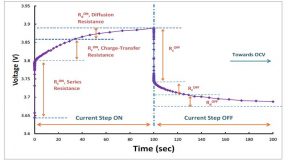Wally Vahlstrom, Director Technical Services
Emerson Network Power, Electrical Reliability Services
Batteries are critical components in any uninterruptible power supply (UPS). Whether we consider an industrial facility, a data center, or the critical power supply to relays and control components of utility systems, the performance of batteries is instrumental to ensuring system availability. Without proper attention and care for batteries, critical infrastructure is put at risk as battery failure is the number one cause of UPS problems. To protect against battery failure and expensive downtime, preventive battery maintenance is key.
Semi-annual and annual maintenance will typically include the inspection of batteries, but data center and other facility managers can see added benefits by implementing a regular preventive maintenance program targeted specifically to batteries. To assess whether proper battery maintenance procedures are in place, managers can refer to regulations governing how batteries should be maintained and the testing standards that ensure performance of critical power systems.
The Institute for Electrical and Electronics Engineers (IEEE) is widely accepted as offering the best standards-driven recommendations to those responsible for battery maintenance procedures. IEEE guidance encompasses inspections, measurements and capacity tests. Key IEEE standards that address the maintenance, testing and replacement of batteries include:
- IEEE 450 for vented lead-acid batteries (VLA)
- IEEE 1188 for valve-regulated lead-acid batteries (VRLA); and
- IEEE 1106 for nickel-cadmium batteries (NiCad).
These standards, which pertain to data centers, utilities and other industrial operations, recommend the frequency of inspections as monthly, quarterly and annually, and the items the inspections should cover; how and when capacity or discharge tests should be conducted; and battery replacement criteria. No matter the industry, the IEEE guidelines establish necessary, minimum maintenance procedures to prevent battery failure. This activity can then be supplemented with additional preventive maintenance to deliver optimal reliability.
Looking at the practices of utilities specifically, the National Electric Reliability Corporation’s (NERC) PRC-005-2 is the standard that addresses protection system maintenance. It includes the requirement that backup batteries “perform as manufactured.”
The impetus for the creation of NERC, and subsequently PRC-005-02, was the 2003 blackout that interrupted electric power to more than 50 million people from New York to Ohio and into Ontario, Canada. Following the outage, NERC was designated as an Electric Reliability Organization and given responsibility for generating standards that would ensure reliability of the Bulk Electric System (BES). The costly effects of that outage demonstrated why minimum maintenance requirements are so important and that the benefits of additional maintenance are worth the investment.
Tables 1-4 of the PRC-005-02 standard cover the requirements for stationary (standby/backup) battery maintenance and testing, and in particular, specify the maximum allowable elapsed time before a battery should undergo maintenance over its service life.
The standard also specifies that the transmission owner, generator owner and distribution provider have evidence of compliance for a specific period of time. Failure to complete the required maintenance at the correct intervals will result in fines that could be in the tens of thousands of dollars. Many utilities exceed published standards for added protection and peace of mind. Implementing preventive maintenance that goes beyond minimum requirements has proven beneficial for all types of business-critical operations.
Professional support from a battery services team with extensive experience and understanding regarding the impact preventive maintenance has on your specific system can be invaluable. The right service technician will understand the integrated system, and can recommend the required maintenance/testing that aligns with IEEE best practices and helps you achieve optimal battery performance. Additionally, an experienced service partner is able to provide baseline information for subsequent testing and trend analysis throughout the battery service life.
Adhering to industry standards for preventive maintenance should be of paramount concern to those responsible for power system reliability. Abnormalities that go undetected or unresolved can have catastrophic consequences. Working with a professional services organization to adhere to battery maintenance standards as part of a comprehensive preventive maintenance program can give facility managers confidence that they are getting the most out of their batteries, and that their emergency power system will operate properly when they need it most.
For more information about battery preventive maintenance, visit www.EmersonNetworkPower.com.










